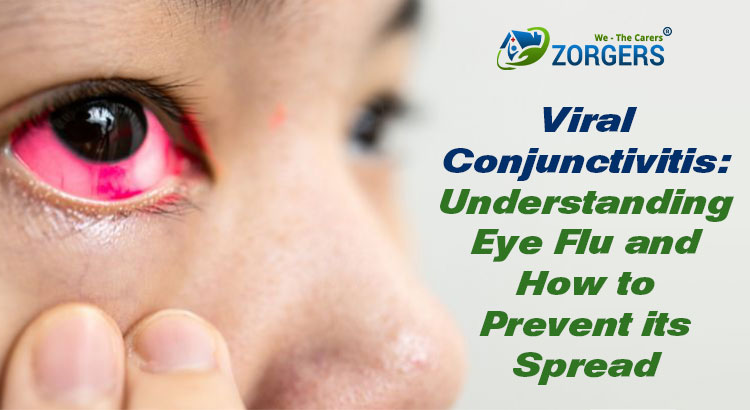Eye health is crucial, and any discomfort or irritation in our eyes can significantly affect our daily lives. One common condition that many people experience is “eye flu,” which can be confusing when compared to regular eye infections or the common flu. In this blog, we’ll delve into what eye flu is, how it differs from eye infections and the flu, and explore effective prevention and control measures.
What is Eye Flu?
Eye flu, also known as viral conjunctivitis, is a highly contagious eye condition caused by viruses. It affects the conjunctiva, a thin, transparent layer covering the white part of the eye and the inner surface of the eyelids. The common symptoms of eye flu include redness, itching, tearing, light sensitivity, and a watery or sticky discharge from the eyes.
Difference between Eye Infection and Eye Flu:
Eye infections can be caused by various factors, including bacteria, viruses, fungi, or parasites. While eye flu is a specific type of viral eye infection, other eye infections might not necessarily be caused by viruses. Bacterial conjunctivitis, for example, results from bacterial infections, and its symptoms may include similar redness and discharge from the eyes.
On the other hand, the common flu, caused by influenza viruses, affects the respiratory system and can lead to symptoms such as fever, cough, sore throat, body aches, and fatigue. The flu typically does not cause eye-related symptoms, making it distinct from eye flu or viral conjunctivitis.
Prevention of Eye Flu:
To protect yourself and others from eye flu, practice the following preventive measures:
Frequent Handwashing: Regularly wash your hands with soap and water, especially before touching your face, eyes, or applying eye drops. This helps prevent the transmission of viruses from contaminated surfaces to your eyes.
Avoid Touching Eyes: Refrain from touching your eyes with unwashed hands, as this can introduce viruses into the conjunctival area.
Personal Hygiene: Use a separate towel and avoid sharing personal items like eye makeup, contact lenses, or eye drops to prevent the spread of the infection.
Control Measures:
If you suspect you have eye flu or any eye infection, take these steps to control its spread:
Isolate: Avoid close contact with others, and if possible, stay home until the infection clears up to prevent spreading it to others.
Avoid Eye Rubbing: Refrain from rubbing your eyes, as this can exacerbate the irritation and increase the risk of spreading the virus.
Seek Medical Attention: Consult an eye specialist promptly for an accurate diagnosis and appropriate treatment. They may prescribe antiviral eye drops or recommend supportive measures to alleviate symptoms.
Conclusion:
Eye flu, or viral conjunctivitis, can be discomforting, but with proper understanding and preventive measures, its spread can be controlled effectively. Differentiating between eye flu, eye infections, and the common flu helps in seeking appropriate care and taking necessary precautions. Remember, maintaining good hygiene and seeking medical attention when needed are key steps towards preserving eye health and preventing the spread of eye flu.







